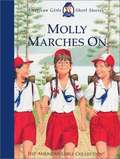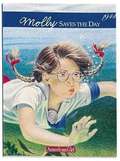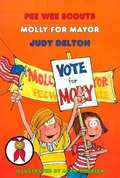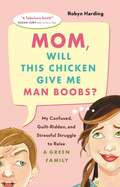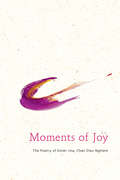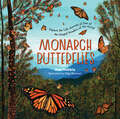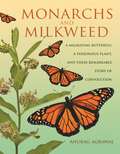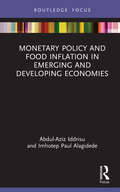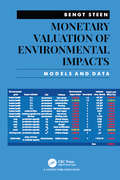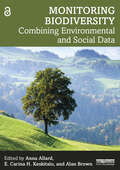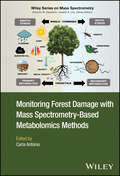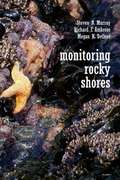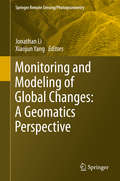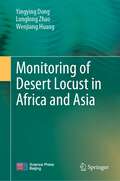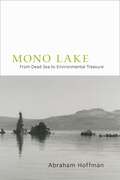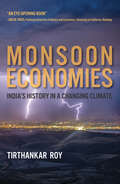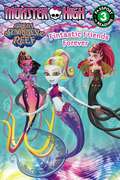- Table View
- List View
Molly Marches On Collection (American Girls Short Stories #18)
by Valerie TrippMolly is disappointed. The hike is nothing like she imagined. The girls sound like a herd of elephants, the trail is marked, and even the leader blows a bugle to get their attention. Nothing is being done the way Sacagawea would have done it. <P><P>When Molly's team comes to a split in the trail, she breaks the rules of hiking and sets out on her own. <P>This file should make an excellent embossed braille copy.
Molly Saves the Day: A Summer Story (American Girls #5)
by Valerie Tripp"Everyone loves Camp Gowonagin, but Molly loves it most of all. She spends two wonderful weeks there singing, hiking, canoeing, and making arts and crafts projects with her friends Linda and Susan. <P><P>When the camp director announces the beginning of Camp Gowonagin's Color War, Molly is afraid that the fun may end. Molly and Susan are on the Blue Team. They have to capture the flag hidden on Chocolate Drop Island by the Red Team. Linda is on the Red Team. She is their enemy and their friend. <P>Will the Color War ruin camp for everyone, or can Molly think of a way to save the day?"
Molly for Mayor (Pee Wee Scouts #39)
by Judy DeltonThe Pee Wees are running for office! In the imaginary town of Peeweeville, the Scouts will be mayor, police chief, and even dogcatcher. Molly thinks she would be a good mayor, but Roger thinks he should be mayor--and he offers candy to anyone who votes for him. How can Molly top that? Promising to do a good job just can't compete with free candy. Mary Beth has some ideas that are sure to get Molly noticed, but will it be the kind of attention Molly needs? May the best candidate win! The Pee Wees goof around, do good deeds, take on projects and have fun and adventures. Find out all about what scouts do in the other 38 Pee Wee Scout books you can get from Bookshare including: #1 Cookies and Crutches, #2 Camp Ghost-Away, #3 Lucky Dog Days, #4 Blue Skies, French Fries, #5 Grumpy Pumpkins, #6 Peanut-Butter Pilgrims, #7 A Pee Wee Christmas, #8 That Mushy Stuff, #9 Spring Sprouts, #10 The Pooped Troop, # 11 The Pee Wee Jubilee, #12 Bad, Bad, Bunnies, #13 Rosy Noses, Frozen Toes, #14 Sonny's Secret, #15 Sky Babies, #16 Trash Bash, # 17 Pee Wees On Parade, #18 Lights, Action, Land-ho!, # 19 Piles of Pets, #20 Fishy Wishes, #21 Pee Wees On skis, #22 Greedy Groundhogs, #23 All Dads on Deck, #24 Tricks and Treats, #25 Pee Wees on First, #26 Super Duper Pee Wees, #27 Teeny Weeny Zucchinis, #28 Eggs With Legs, #29 Pee Wee Pool Party, #30 Bookworm Buddies, #31 Moans and Groans and Dinosaur Bones, #32 Stage Frightened, #33 Halloween Helpers, #34 Planet Pee Wee, #35 Pedal Power, #36 Computer Clues # 37 Wild, Wild West, and #38 Here Come the Clowns.
Molt in Neotropical Birds: Life History and Aging Criteria (Studies in Avian Biology)
by Erik I. Johnson Jared D. WolfeMolt is an important avian life history event in which feathers are shed and replaced. The timing, duration, seasonality, extent and pattern of molt follows certain strategies and this book reviews and describes these strategies for nearly 190 species based on information gathered from a 30-year study of Central Amazonian birds. Most species accounts are illustrated with several color photos focusing on wing and tail feather molt, molt limits, and how to use these patterns to accurately age birds. Published in collaboration with and on behalf of the American Ornithological Society, this volume in the highly-regarded Studies in Avian Biology series is a rich source of life history information for ornithologists working on tropical birds.
Mom, Will This Chicken Give Me Man Boobs?
by Robyn HardingAfter moving to ultra-eco-conscious Vancouver, Robyn Harding vows to decrease the size of her family's carbon footprint. Ten-year-old Ethan worries about getting moobs from hormones in the food supply, so Robyn commits to buying organic. She quickly discovers that to keep the family in organic milk, she'll have to sell a kidney. Then, eight-year-old Tegan becomes obsessed with the diminishing polar bear population. Soon Robyn finds herself making litterless lunches, greening her home, and valiantly trying to de-commercialize Christmas and birthdays. To make matters worse, she befriends a three-children, no-car single mother who shuttles her offspring and their various musical instruments (including a cello) around by bike and trailer. Who can compete with that? Harding deals with the challenges of ethical consumerism with spirit and wit, pondering how far her family has come, how far they're willing to go, and whether she can go green and stay sane - and keep her kidneys.
Moments of Joy: The Poetry of Sister Jina, Chan Dieu Nghiem
by Sister Jina van HengelThe first full-length collection of poems from contemplative Buddhist nun Sister Jina van Hengel, each short verse radiates the energy of a single moment of awareness.Like a master gardener, over the years the revered Zen teacher Thich Nhat Hanh has cultivated a host of brilliant monastics in the Plum Village Community of Engaged Buddhism. Living simply and practicing deeply for many years in the French countryside, Sister Jina van Hengel is one of Plum Village's most beloved senior Dharma teachers, known for her embodiment of the teachings, her warmth of character, and her Zen poetry.For readers of natural contemplatives in the vein of Mary Oliver, Thomas Merton, and, of course, Thich Nhat Hanh, these poems teach us to savor everyday life with awareness and gratitude.
Moms Who Hike: Walking with America's Most Inspiring Adventurers
by Heather Balogh RochfortMoms Who Hike celebrates the athleticism, wisdom, and skill of over twenty of America&’s most inspiring adventurer mothers ranging from legends to rising stars of today. The book is both inspirational and aspirational as each adventurer tells her story in her own words through featuring their favorite hike, highlighting personal challenges, accomplishments, and philosophy, as well as providing readers with practical how-to suggestions on maximizing not only their own potential in hiking but in life. The profiles are complemented by stunning color photographs. Each profile includes a map of the hike being profiled, hike specs, miles and directions, GPS coordinates to the trailhead, and a sidebar of something noteworthy about the hike, the location, or the adventurer.
Monarch Butterflies: Explore the Life Journey of One of the Winged Wonders of the World
by Ann HobbieMonarch Butterflies is a richly illustrated, large-format book that celebrates North America&’s most recognized butterfly and educates children and families about what they can do to help protect these beloved pollinators from the impacts of habitat loss and climate change.
Monarch Butterfly (Live Oak Media Ereadalong Ser.)
by Gail GibbonsIntroduce young readers to the fascinating process of how catepillars become butterflies. Follow the transformation from a tiny white egg laid on a leaf to a brilliantly colored butterfly in this kid-friendly introduction to metamorphosis. With detailed, bright watercolors, Gail Gibbons illustrates the life cycle of the monarch butterfly, stage by stage, as it grows, changes, and takes flight. With clear, labeled diagrams and simple text that defines and reinforces important vocabulary, Monarch Butterfly introduces key concepts of insect anatomy and behavior. And of course, the unique migration of the monarch-- which can range up to four thousand miles-- is covered, with descriptions of how the insects travel, and how people in their path celebrate the occasion. This classic look at butterflies also includes directions on raising your own monarch at home, and a page of fun facts about these colorful butterflies.
Monarchs and Milkweed: A Migrating Butterfly, a Poisonous Plant, and Their Remarkable Story of Coevolution
by Anurag AgrawalThe fascinating and complex evolutionary relationship of the monarch butterfly and the milkweed plantMonarch butterflies are one of nature's most recognizable creatures, known for their bright colors and epic annual migration from the United States and Canada to Mexico. Yet there is much more to the monarch than its distinctive presence and mythic journeying. In Monarchs and Milkweed, Anurag Agrawal presents a vivid investigation into how the monarch butterfly has evolved closely alongside the milkweed—a toxic plant named for the sticky white substance emitted when its leaves are damaged—and how this inextricable and intimate relationship has been like an arms race over the millennia, a battle of exploitation and defense between two fascinating species.The monarch life cycle begins each spring when it deposits eggs on milkweed leaves. But this dependency of monarchs on milkweeds as food is not reciprocated, and milkweeds do all they can to poison or thwart the young monarchs. Agrawal delves into major scientific discoveries, including his own pioneering research, and traces how plant poisons have not only shaped monarch-milkweed interactions but have also been culturally important for centuries. Agrawal presents current ideas regarding the recent decline in monarch populations, including habitat destruction, increased winter storms, and lack of milkweed—the last one a theory that the author rejects. He evaluates the current sustainability of monarchs and reveals a novel explanation for their plummeting numbers.Lavishly illustrated with more than eighty color photos and images, Monarchs and Milkweed takes readers on an unforgettable exploration of one of nature's most important and sophisticated evolutionary relationships.
Monarchs in a Changing World: Biology and Conservation of an Iconic Butterfly
by Kelly R. Nail Karen S. Oberhauser Sonia AltizerMonarch butterflies are among the most popular insect species in the world and are an icon for conservation groups and environmental education programs. Monarch caterpillars and adults are easily recognizable as welcome visitors to gardens in North America and beyond, and their spectacular migration in eastern North America (from breeding locations in Canada and the United States to overwintering sites in Mexico) has captured the imagination of the public.Monarch migration, behavior, and chemical ecology have been studied for decades. Yet many aspects of monarch biology have come to light in only the past few years. These aspects include questions regarding large-scale trends in monarch population sizes, monarch interactions with pathogens and insect predators, and monarch molecular genetics and large-scale evolution. A growing number of current research findings build on the observations of citizen scientists, who monitor monarch migration, reproduction, survival, and disease. Monarchs face new threats from humans as they navigate a changing landscape marked by deforestation, pesticides, genetically modified crops, and a changing climate, all of which place the future of monarchs and their amazing migration in peril. To meet the demand for a timely synthesis of monarch biology, conservation and outreach, Monarchs in a Changing World summarizes recent developments in scientific research, highlights challenges and responses to threats to monarch conservation, and showcases the many ways that monarchs are used in citizen science programs, outreach, and education. It examines issues pertaining to the eastern and western North American migratory populations, as well as to monarchs in South America, the Pacific and Caribbean Islands, and Europe. The target audience includes entomologists, population biologists, conservation policymakers, and K-12 teachers.
Monetary Policy and Food Inflation in Emerging and Developing Economies (Routledge Focus on Environment and Sustainability)
by Abdul-Aziz Iddrisu Imhotep Paul AlagidedeThis book focuses on the impact of monetary policy and food price volatility and inflation in emerging and developing economies. The tendency for food price volatility to blot inflation forecasting accuracy, engender tail dynamics in the overall inflation trajectory and derail economic welfare is well known in the literature. The ability of monetary policy to exact stability in food prices, theoretically, has also been well espoused. The empirical evidence, however, is not only in short supply, but also the studies available have dwelt on approaches that underplay the volatile behaviour of food prices. This book focuses on inflation targeting in emerging economies such as Chile, Mexico, Turkey, Brazil, Hungary, Russia, Colombia, South Africa, Indonesia and Ghana, as these are economies with considerable proportion of the consumption basket occupied by food. The book provides the means to understand at first hand the correct way to model food inflation, account for the related policy responses to deviations either in the short or medium to long term, and in market conditions that are subject to excessive variability. Strong evidence is presented that captures deviations of food prices from their trend and the accompanying monetary policy effect in stabilizing such variabilities across distinct frequencies. The novel approach in this book addresses the burgeoning puzzles of asymmetry in monetary policy effect on food prices at high, medium and low episodes of food inflation. In doing so, this book presents a powerful tool for researchers interested in understanding not just the transmission mechanism, but also the magnitudes involved, and to policymakers whose existing tools have failed them. Future studies will do well to deepen the evidence and seek new grounds to which the phenomenon manifests beyond and below emerging markets. This book will be of great interest to students, scholars and policymakers involved in agricultural economics, financial economics, food security and sustainable development.
Monetary Valuation of Environmental Impacts: Models and Data
by Bengt SteenThe book is meant to improve our understanding of sustainable development of production and consumption. Monetary values of the impact of emission and resources are determined, and used in environmental management, with a focus on sustainability. Values related to cultural context are not possible to predict, therefore ignored. The book only focuses on environmental goods and services that are used to satisfy basic human needs. One of the benefits of monetary valuation is its holistic approach. The impact of any contributing factor on the total value, can be determined, and the sensitivity to uncertainty in inputs can be estimated. This is useful in developing knowledge, where it is most needed. In a society, there are many economic units which need to function in tandem to support human welfare. Each unit has its own system boundary in what it includes and covers in time and space. The system boundary of a sustainable unit is likely to be very long and wide. This book provides data on long term monetary values of environmental impacts from human activities. It discusses the choice of system boundaries, and how to use monetary values in sustainable development. A large part of the book describes impact models in terms of the relation between emissions and natural goods and services.
Monitoring At Chemical Agent Disposal Facilities
by National Research Council of the National AcademiesUnder the direction of the U.S. Army’s Chemical Materials Agency (CMA) and mandated by Congress, the nation is destroying its chemical weapons stockpile. Over the past several years, the Army has requested several studies from the NRC to assist with the stockpile destruction. This study was requested to advise the CMA about the status of analytical instrumentation technology and systems suitable for monitoring airborne chemical warfare agents at chemical weapons disposal and storage facilities. The report presents an assessment of current monitoring systems used for airborne agent detection at CMA facilities and of the applicability and availability of innovative new technologies. It also provides a review of how new regulatory requirements would affect the CMA’s current agent monitoring procedures, and whether new measurement technologies are available and could be effectively incorporated into the CMA’s overall chemical agent monitoring strategies.
Monitoring Biodiversity: Combining Environmental and Social Data
by Alan Brown Anna Allard Keskitalo, E. Carina H.This book is an exciting reappraisal of the role and practice of biodiversity monitoring, showing how new technologies and software applications are rapidly maturing and can both complement and maintain continuity with the best practice in traditional field skills. Environmental monitoring is a key component in a large number of national programmes and constitutes an important aspect of understanding environmental change and supporting policy development. Taking an interdisciplinary approach, Monitoring Biodiversity begins by discussing monitoring as an established field and examines the various budgetary and technological challenges. It examines different methodologies, the variation between countries, and the design features relevant to understanding monitoring systems created for new policy goals or different funding situations. The huge variety of methods revealed across 18 chapters, which vary from statistical designs to remote sensing, interviews, surveys, and new ways of stacking and combining data and thematic information for visualization and modelling, underlines just how mature and multifaceted the modern practice of monitoring can be. It concludes with several problem-based chapters that discuss the design and implementation of environmental monitoring in specific scenarios such as urban and aquatic areas. All chapters include key messages, study questions, and further reading. With a focus on Europe but with international relevance, Monitoring Biodiversity will be an essential resource for students at all levels of environmental monitoring, assessment, and management.
Monitoring Forest Damage with Mass Spectrometry-Based Metabolomics Methods (Wiley Series on Mass Spectrometry)
by Dominic M. Desiderio Joseph A. LooMonitoring Forest Damage with Mass Spectrometry-Based Metabolomics Methods Understand forest responses to climate change with this timely introduction Forests are among the most critical parts of our global ecosystem, responsible for the air we breathe, home to most of the earth’s species, and crucial sources of food and raw materials. Forest development is therefore one of the most important areas of ecological study, and damage to forests is potentially existential. Metabolomics, a toolkit which accrues data on interactions between genetic and environmental conditions, promises to advance our understanding of how these vital ecosystems respond to dramatic changes in climate and environment. Monitoring Forest Damage with Mass Spectrometry-Based Metabolomics Methods offers a thorough, accessible discussion of metabolomic techniques and their applications in forest tree research. It promises to enrich the reader’s understanding of how forests are being transformed by globe-spanning changes, and to arm researchers with tools for reacting to these potentially epochal developments. Monitoring Forest Damage with Mass Spectrometry-Based Metabolomics Methods readers will also find: Analysis of specialized secondary metabolites such as phytohormonesDetailed discussion of ecologically important tree genera such as Pinus, Populus, Quercus, and many moreSupplementary materials related to study design, sample preparation, and instrumental analysis protocols Monitoring Forest Damage with Mass Spectrometry-Based Metabolomics Methods is ideal for researchers in analytical chemistry, mass spectrometry, metabolomics, forest research, the life sciences, and all other related fields.
Monitoring Rocky Shores
by Steven N. Murray Richard F. Ambrose Megan N. DethierThis is a handbook for those surveying the ecology and environmental health of the rocky shore. Advice is provided on how to select sites for study, what measurements need to be made, etc.
Monitoring and Evaluation of Soil Conservation and Watershed Development Projects
by Jan De Graaff John Cameron Samran Sombatpanit Christian Pieri Jim Woodhill Annemarieke De BruinThis book provides diverse information and critical know-how to implement appropriate methodology and cost-efficient monitoring and evaluation systems better suited to assess the impacts of soil conservation and wastershed multi-sectoral development activities. It draws on a worldwide experience of specialists and a large array of ground-truthing projects and programmes. This book will meet its objective if it contributes to convince financing institutions and project managers that integrated watershed management activities have the potential to generate highly desirable impacts for the society at large, which have to be accurately measured by adequate M&E systems.
Monitoring and Modeling of Global Changes: A Geomatics Perspective
by Xiaojun Yang Jonathan LiThe chapters in this book present state-of-the-art geomatics technologies applied in global environmental studies. This text provides the latest research findings and delivers complete references to related publications. This book will motivate the undergraduate and graduate students, researchers and practitioners to better understand the environmental changes with informed solutions. Global Change studies are increasingly considered a vital source of information to understand the Earth Environment, especially in the framework of human-induced, climate change and land use transformation. Satellite Earth Observing systems and geomatics technologies provide a unique tool to monitor and model the changes, respectively. While the range of applications and innovative techniques are always increasing, this book provides a summary of key study cases where satellite data offers critical information to understand the usefulness of the geomatics technologies and global environmental issues. Geomatics technologies provide powerful tools to model and analyze the effects of those global environmental changes towards minimizing their adverse impacts on human health and the environment.
Monitoring for a Sustainable Tourism Transition: The Challenge of Developing and Using Indicators
by Graham Miller Louise Twining-WardSustainable tourism is not a static target, but a dynamic process of change, a transition. This book considers how monitoring using indicators can assist tourism to make such a sustainability transition. It encourages the reader to view tourism from a broad, interdisciplinary perspective and draws on material from a wide range of sources. The book explains why monitoring is important for different groups of stakeholders; public and private sector, NGOs and communities. It also examines important monitoring considerations such as what and where to measure, how much will monitoring cost and how the data can be presented. The book puts particular emphasis on indicator use and implementation. It highlights the process and techniques to develop and use indicators and then provides clear and detailed examples of monitoring in practice around the globe at different geographic scales.
Monitoring of Desert Locust in Africa and Asia
by Yingying Dong Longlong Zhao Wenjiang HuangThis book deals with the topic on remote sensing monitoring of desert locust in Africa and Asia. Remote sensing monitoring of the occurrence and damage of desert locust is conducted by integrating cutting-edge technologies and methods in cross-disciplinary fields in remote sensing science, geographic information science, agronomy, plant protection, agricultural meteorology, mathematics, and computer science. The main contents include spatio-temporal data analysis and processing, desert locust breeding areas monitoring, pest migration path analysis and damage monitoring. Moreover, a desert locust remote sensing monitoring system is constructed and applied in the region of Africa and Asia countries. This book not only provides technical reference for remote sensing monitoring and application of desert locust but also serves as a research reference for scholars and graduate students engaged in agricultural remote sensing, agricultural information technology, plant protection and other related field. It will help to improve remote sensing monitoring and application of desert locust.
Monkey Dancing: A Father, Two Kids, And A Journey To The Ends Of The Earth
by Daniel GlickAn inspiring globe-trotting road trip with a personal and environmental agenda. . . definitely an armchair trip worth taking. "?Seattle Post-Intelligencer"
Mono Lake: From Dead Sea to Environmental Treasure
by Abraham HoffmanMono Lake is one of the largest lakes in California, and Californians have been using it, enjoying it, and abusing it since nomadic northern Paiutes began hunting the lake&’s vast bird populations. Controversy between environmentalists and the City of Los Angeles brought so much attention to Mono Lake in the late twentieth century that it became best known for its appearance on &“Save Mono Lake&” bumper stickers. This thoughtful study is the first book to explore the lake&’s environmental and cultural history.Hoffman writes about gold mining in the Mono Basin; the taking of birds and their eggs to supply food for miners and townspeople; a failed oil boom; efforts to develop recreational activities such as a state-operated marina, which also failed; catastrophes including plane crashes and the testing of bombs underwater; and litigation over the diversion of creeks flowing into the lake and the resulting decline in the lake level. A variety of photographs, some never before published, ranging from mining to motor boat races in the 1930s are also included.
Monsoon Economies: India's History in a Changing Climate (History for a Sustainable Future)
by Tirthankar RoyHow interventions to mitigate climate-caused poverty and inequality in India came at a cost to environmental sustainability.In the monsoon regions of South Asia, the rainy season sustains life but brings with it the threat of floods, followed by a long stretch of the year when little gainful work is possible and the threat of famine looms. Beginning in the late nineteenth century, a series of interventions by Indian governments and other actors mitigated these conditions, enabling agricultural growth, encouraging urbanization, and bringing about a permanent decrease in death rates. But these actions—largely efforts to ensure wider access to water—came at a cost to environmental sustainability. In Monsoon Economies, Tirthankar Roy explores the interaction between the environment and the economy in the emergence of modern India. Roy argues that the tropical monsoon climate makes economic and population growth contingent on water security. But in a water-scarce world, the means used to increase water security not only created environmental stresses but also made political conflict more likely. Roy investigates famine relief, the framing of a seasonal &“water famine,&” and the concept of public trust in water; the political movements that challenged socially sanctioned forms of deprivation; water as a public good; water quality in cities; the shift from impounding river water in dams and reservoirs to exploring groundwater; the seasonality of a monsoon economy; and economic lessons from India for a world facing environmental degradation.
Monster High: Fintastic Friends Forever
by Margaret GreenLagoona Blue and her ghoulfriends are on a creeperific undersea adventure in the Great Scarrier Reef. But not everything is going swimmingly. For some reason, Lagoona's old friend Kala is acting not-so-friendly. Something fishy is going on! Can the friends work it out?Passport to Reading Level 2© 2016 Mattel. All Rights Reserved.
